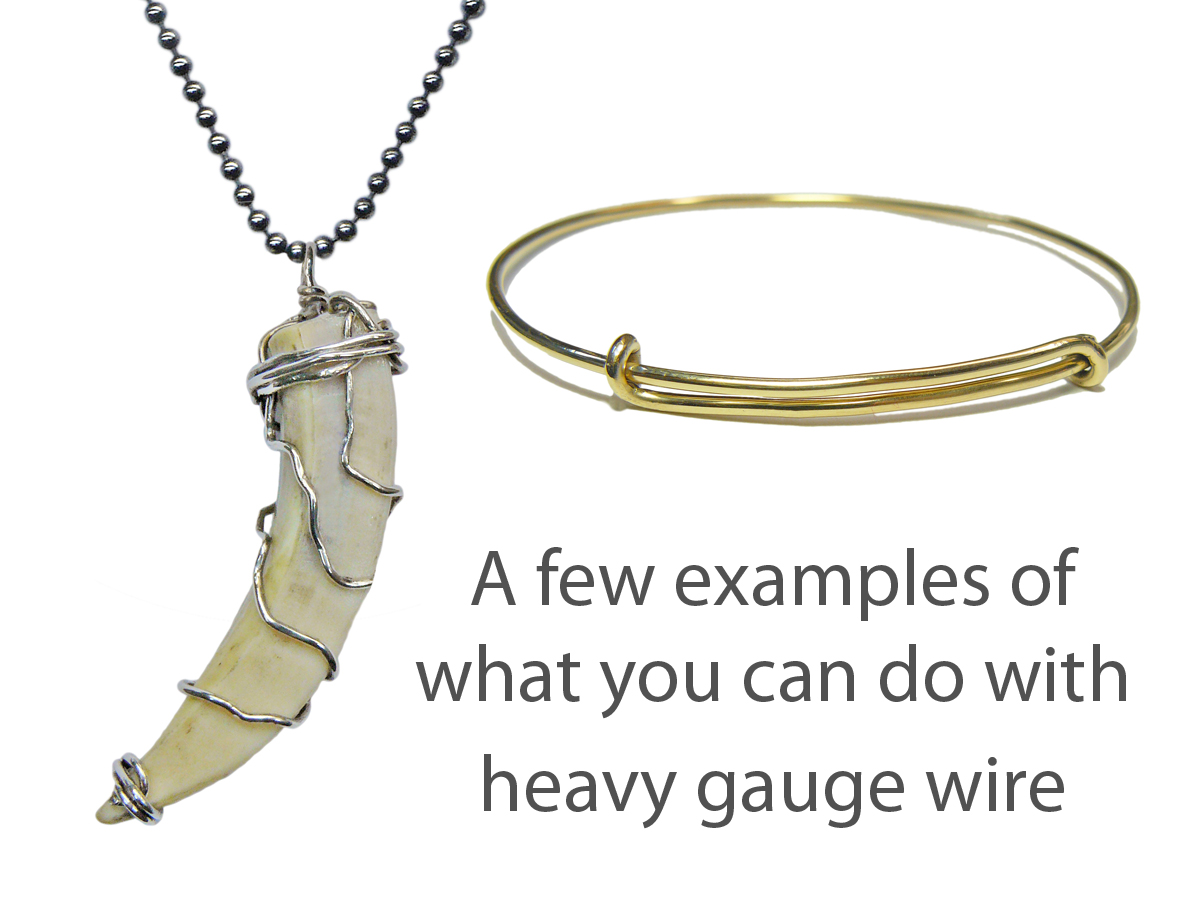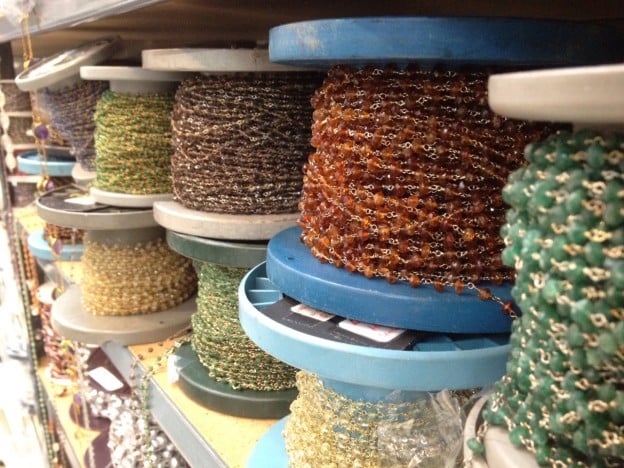In Part 1 of Wire Wrapping 101, we walked through some of the popular materials and colors of round wire that are available for designer grade jewelry. In this section, we will discuss another important criterion for choosing wire for your design; wire thickness.
Metal wire comes in all shapes and sizes with thicknesses ranging from ultra-fine to thick and heavy. Every wire size has countless applications but in general, thin wire can be used to produce handmade wire-wrap chains or delicate bails to hang pendants and stones, while thicker gauge wire can be bent, hammered, and polished into bracelets and heavy centerpieces. Medium gauges are great for making miscellaneous parts and depending on the design, they can even be used in similar ways as you would with thick or thin wires.
Wire thickness is commonly measured in by the non-metric “gauge” system, in which thinner wire has higher gauge size and vice versa. For example, 10G (2.5mm) is much thicker than 20G (0.8mm) and 30G (0.25mm).
Thin gauge wires from 24G-32G are great for use with beads that have small holes and are typically used to make wire-wrapped chains or as a bail to complete a pendant. The gauge that you use naturally depends on the hole size and width of your beads. As a general rule, 28G-32G wire is best for wrapping beads with a width less than 3mm or 4mm in diameter. Most beads larger than 4mm will accommodate 24G and 26G wire, so it is mostly down to personal preference when choosing between the two. If you want a more delicate look, it is better to use 26G but 24G is more appropriate if you are using wider, heavier parts and want the wire work to show more.
Thick gauge wires from 8G-16G are best suited for heavy pieces like bangles and heavy wire cages, because they can withstand major punishment. The weight and thickness tends to allow a lot of freedom with designs because you can bend, hammer, solder, smooth and polish heavy gauges much more aggressively. Depending on your design and level of experience, it is even possible to drill small holes in 8G-12G wire without compromising the structural integrity of your piece.
Medium gauges from 18G-22G are best for miscellaneous parts like earring components; specifically earwires or posts for stud earrings. Although there aren’t many techniques that are exclusive to medium wire thicknesses, they can be used for many of the same applications as the heavy or thin gauges. A good example is that with large beads and more masculine designs, medium gauge wire may actually work better for wire wrapping chains and pendants than thinner gauges would. Though more delicate work is required with 18G-22G wire, you can also use hammering, polishing, and soldering techniques similarly to the heavier gauges and incorporate them into bangles and wire cage designs.

To sum everything up…
From the tried and true pigtail chains to unorthodox concept pieces, round wire is perhaps the single most versatile jewelry component in no small part due to the number of sizes available on the market. Speaking from a designers perspective, it is easy to fall into a habit of sticking with a few gauges that are familiar to you, but with so many exciting ways to utilize round wire, it just takes a little bit of imagination to wrap yourself a wonderfully unique design. Bend outside of your comfort zone by trying out a few new gauges of wire–you may be surprised how everything winds up.
-Cyrus Nemani, Gempacked

